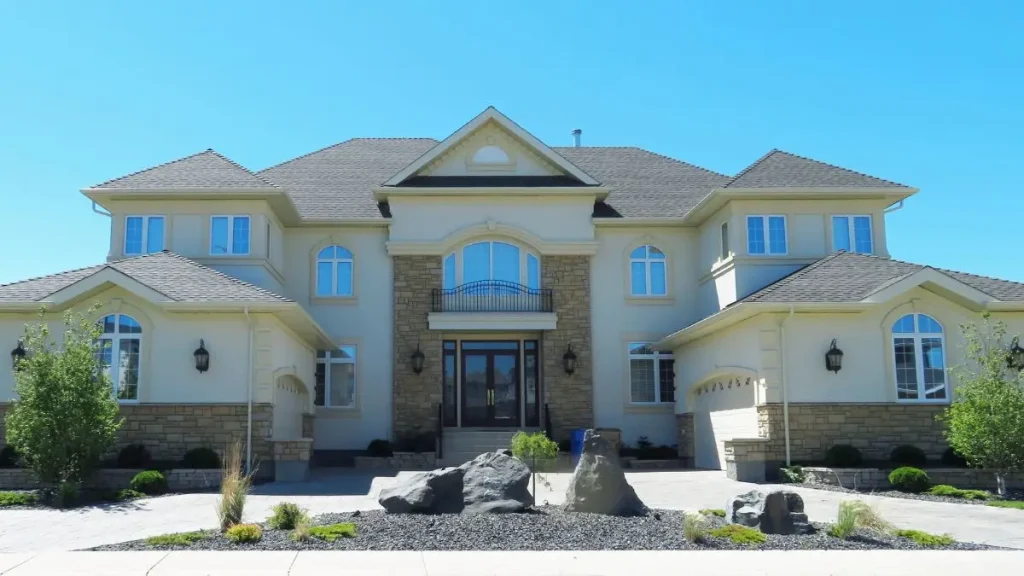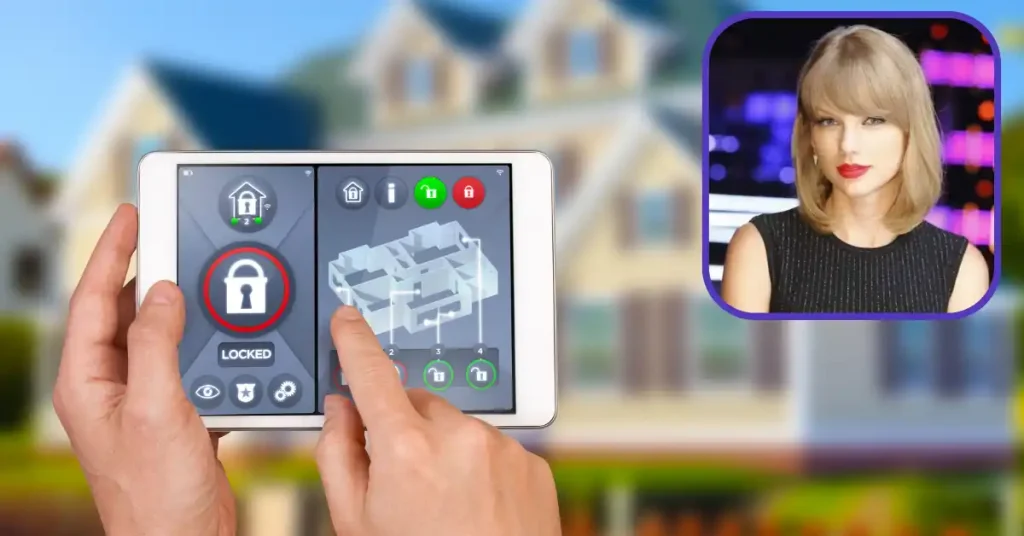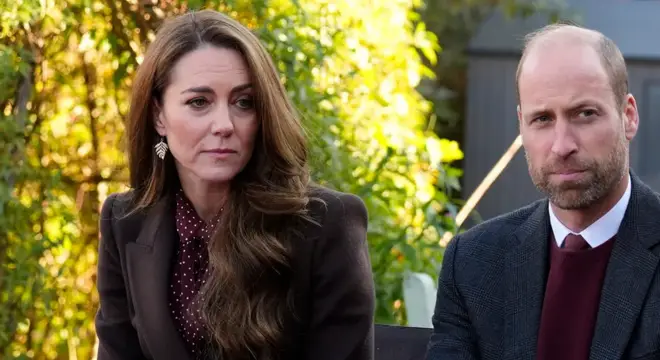Snake Invades Kyle Richards’ Home: How Secure Are Celebrity Mansions?
When it comes to luxury living, home security is often assumed to be a top priority. Celebrities, in particular, have access to the best in terms of surveillance, privacy, and protection. However, as the recent snake incident at Kyle Richards’ home revealed, even the most secure mansions are not immune to the unexpected.
Kyle Richards, a well-known reality TV star, found herself in a chaotic situation when a snake made its way into her home, causing panic among her family. The event not only sparked concern for her family’s safety but also highlighted a key issue: the security vulnerabilities even the most luxurious homes may face.
While snake-proofing and surveillance systems are commonly thought of as effective measures, they’re not always foolproof. This article will explore the implications of this incident, dive into potential security gaps in celebrity homes, and suggest practical improvements homeowners can make to better protect their properties.
The Incident – Kyle Richards Calls Ex Mauricio Umansky When Snake Causes Chaos
The incident unfolded in the heart of Kyle Richards’ family home. According to reports, the snake appeared suddenly, triggering panic. While the specifics of the snake’s entry are unclear, it’s not surprising that this unexpected event caused such a stir—wildlife intrusions are an all-too-common yet often overlooked threat to homeowners.
In Kyle’s case, the situation was particularly distressing because of her high-profile status and the assumption that her home would be fully protected.
In a moment of fear and confusion, Kyle reached out to her ex-husband, Mauricio Umansky, for help. This action speaks volumes about how vulnerable even the most secure properties can be to unforeseen threats. The reality of the situation was clear—regardless of how much wealth or security one has, an event like this can quickly turn into a crisis.
The snake scare was not just an inconvenience but a stark reminder that luxury homes, often seen as impenetrable fortresses, have their weak points—especially when it comes to natural or wildlife intrusions.
It’s easy to forget that no home is truly “safe” from the unexpected, whether it be human or animal-related. And for those in high-profile positions like Kyle, these vulnerabilities can quickly become a public talking point, further highlighting the need for thorough and comprehensive home security systems.
Celebrity Homes and Security Vulnerabilities

The case of Kyle Richards is far from unique. Many luxury homes, especially those located in areas surrounded by natural landscapes, face similar risks. While celebrities and wealthy individuals often have high-tech surveillance systems, professional security teams, and gated properties, these measures primarily focus on human threats—such as burglars, intruders, and paparazzi. Unfortunately, such systems aren’t designed to address the unpredictable nature of wildlife invasions.
In many cases, the immediate reaction to a wildlife intrusion is panic, and the appropriate measures to handle such threats are often not in place. The concept of wildlife-proofing a home is typically not part of the standard security plan, which is why an event like a snake entering a property can escalate quickly.
This highlights the vulnerability of homes that may be “secure” in terms of human threats but leave gaps when it comes to natural dangers.
From a broader perspective, wildlife threats such as snakes, raccoons, or even wild boars can present risks that traditional security systems are simply not designed to handle. Homes situated near forests, parks, or bodies of water are more prone to such intrusions.
And even for urban areas, smaller pests and animals—while seemingly harmless—can still create significant problems, particularly if they damage property or, like in Kyle Richards’ case, instill fear and chaos.
As this incident showed, the presence of a snake in a home can trigger not only panic but also the realization that security systems may need to evolve. While human threats are often at the forefront of security discussions, it’s just as critical to protect against unexpected natural risks—especially in homes where personal safety and security are of utmost importance.
How Proper Home Security Can Prevent Such Incidents
While many luxury homes, like that of Kyle Richards, boast top-tier security systems to handle human threats, wildlife safety is often neglected. Yet, with a few additional measures, homeowners can drastically reduce the chances of unexpected intrusions, such as the snake incident, causing chaos in their homes.
1. Snake-Proofing the Home:
One of the most immediate ways to prevent wildlife from entering your home is by “snake-proofing” your property. This involves sealing any cracks or gaps in the structure, particularly in areas like doorways, windows, and around plumbing or electrical fixtures where wildlife can sneak through unnoticed.
Installing mesh barriers in key areas can also help to keep snakes and other animals out. Additionally, keeping the yard free of tall grass and thick vegetation can eliminate hiding spots for snakes and discourage them from coming near the house in the first place.
2. Surveillance and Outdoor Monitoring:
While interior cameras are great for security, adding outdoor surveillance systems can also play a crucial role in protecting against wildlife. Motion sensors around the exterior of the home can detect animals before they get too close to the house.
For homes situated in rural or wildlife-prone areas, investing in cameras that monitor fences, gates, and any potential entry points can allow homeowners to spot intruders early and take action before an event escalates.
3. Alarm Systems Integrated with Wildlife Detection:
Traditional alarm systems designed to detect human motion might not be sensitive enough to catch smaller intruders like snakes or raccoons. However, integrating specific sensors designed for detecting wildlife movement around the home could be a game changer. These systems could trigger alerts when animals approach specific zones, allowing homeowners to take immediate action.
4. Regular Inspections and Maintenance:
A critical, yet often overlooked, aspect of home security is regular inspections and maintenance. Ensuring that the outdoor property is free from overgrowth, repairing any structural weaknesses in the building, and periodically checking for potential entry points can go a long way in preventing wildlife from becoming a threat.
This proactive approach can help avoid the panic and stress associated with incidents like the one Kyle Richards experienced.
Discover the key aspects of Martha Stewart’s home life as she joins Kelly Clarkson to discuss how to balance home design with food preparation.
What Can Be Improved in Home Security?

The Kyle Richards snake incident presents a unique opportunity to reflect on how home security can be further improved—not just for celebrities, but for anyone looking to ensure their home is well-protected against unexpected intrusions.
1. Enhancing Security Awareness for Wildlife:
Many homeowners might not even consider the threat of wildlife when thinking about home security. To fill this gap, homeowners should be encouraged to adopt a more comprehensive security mindset.
This includes understanding the risks posed by natural intruders and taking appropriate precautions to mitigate those risks. Education on wildlife safety, as well as the implementation of systems to detect and manage animal intrusions, should become a part of the home security conversation.
2. Comprehensive Security Audits:
One of the most effective ways to prevent security breaches—whether from humans or wildlife—is to conduct regular security audits. These audits can help identify weaknesses in your current security setup and ensure that every area of your home, including the grounds surrounding it, is sufficiently protected.
By doing so, homeowners can assess whether their existing systems are up to the task or if additional measures, like wildlife sensors, are needed.
3. Emergency Response Plans for All Scenarios:
Another critical improvement for any homeowner is the creation of an emergency response plan. This plan should go beyond human threats and include provisions for wildlife-related incidents. For instance, how should you react if a snake or wild animal enters your home?
What steps should be taken to ensure the safety of your family members and pets? Having a clear, well-rehearsed response plan can significantly reduce the stress and confusion when faced with a real-life emergency.
4. Technology Integration:
Today’s smart home technology offers more than just convenience—it can also enhance home security. Beyond traditional surveillance, new technologies offer innovative ways to detect intruders, both human and animal.
From sensors that can detect movement in remote areas of the property to automated systems that can activate security features when an animal is detected, the integration of technology into home security is evolving rapidly. Homeowners should take advantage of these advancements to make their homes more secure and better equipped to handle a variety of threats.
5. Professional Wildlife Management Services:
For homes in areas prone to wildlife invasions, seeking professional wildlife management services can provide a long-term solution. These services offer expertise in preventing, managing, and dealing with wildlife intrusions, from snakes to raccoons and other pests. While traditional security services focus on human threats, wildlife management services ensure that every aspect of the home is adequately protected.
Conclusion
The snake scare at Kyle Richards’ home is not just a celebrity mishap but a reminder to all homeowners about the importance of comprehensive home security. While we often focus on protecting against human threats, natural intrusions can pose just as significant a risk to our homes and loved ones. By integrating wildlife safety into our security measures, conducting regular audits, and embracing new technologies, we can create a safer living environment for ourselves and our families.
This incident serves as a wake-up call for both high-profile individuals and everyday homeowners alike. It’s time to rethink what it means to truly secure a home.
If you want to enhance your home’s security and protect your family from unexpected intrusions, consider taking the necessary steps today. Whether it’s snake-proofing your property, installing motion sensors, or conducting a thorough security audit, there are multiple ways to improve your home’s safety. Visit our website for more expert advice and tips on how to secure your home from both human and natural threats.
Disclaimer: The information provided in this article is intended for general informational purposes only and should not be construed as professional security advice. While we strive to offer accurate and up-to-date information, homeowners should always consult with a professional security service or wildlife management expert for specific recommendations tailored to their unique needs. Home security measures, particularly those concerning wildlife, vary by location, and additional precautions may be necessary based on your property’s environment.


